Benjamin Szczapa
Automatic Estimation of Self-Reported Pain by Trajectory Analysis in the Manifold of Fixed Rank Positive Semi-Definite Matrices
Sep 17, 2022



Abstract:We propose an automatic method to estimate self-reported pain based on facial landmarks extracted from videos. For each video sequence, we decompose the face into four different regions and the pain intensity is measured by modeling the dynamics of facial movement using the landmarks of these regions. A formulation based on Gram matrices is used for representing the trajectory of landmarks on the Riemannian manifold of symmetric positive semi-definite matrices of fixed rank. A curve fitting algorithm is used to smooth the trajectories and temporal alignment is performed to compute the similarity between the trajectories on the manifold. A Support Vector Regression classifier is then trained to encode extracted trajectories into pain intensity levels consistent with self-reported pain intensity measurement. Finally, a late fusion of the estimation for each region is performed to obtain the final predicted pain level. The proposed approach is evaluated on two publicly available datasets, the UNBCMcMaster Shoulder Pain Archive and the Biovid Heat Pain dataset. We compared our method to the state-of-the-art on both datasets using different testing protocols, showing the competitiveness of the proposed approach.
Automatic Estimation of Self-Reported Pain by Interpretable Representations of Motion Dynamics
Jun 24, 2020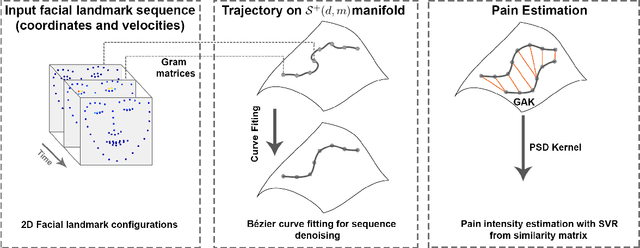
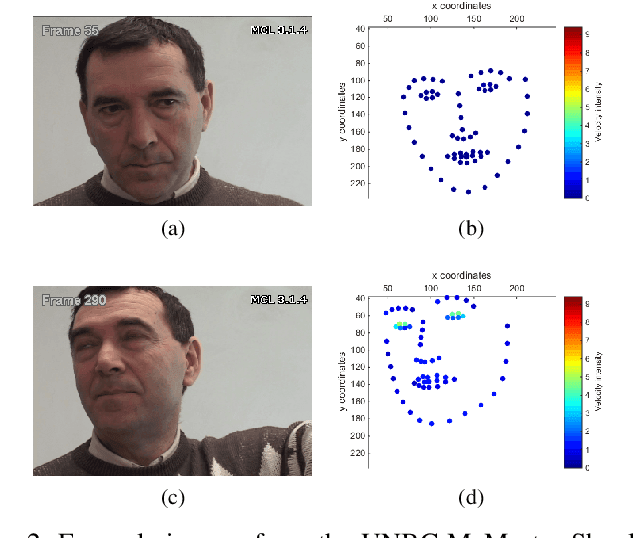
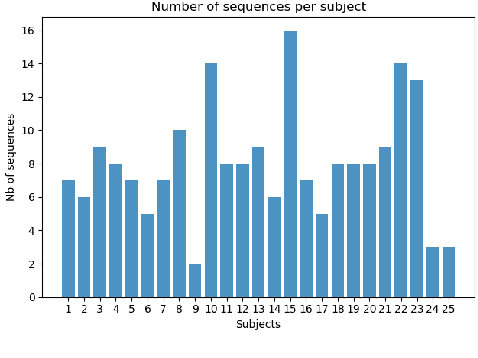
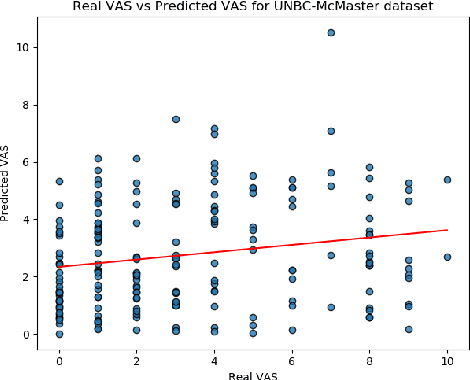
Abstract:We propose an automatic method for pain intensity measurement from video. For each video, pain intensity was measured using the dynamics of facial movement using 66 facial points. Gram matrices formulation was used for facial points trajectory representations on the Riemannian manifold of symmetric positive semi-definite matrices of fixed rank. Curve fitting and temporal alignment were then used to smooth the extracted trajectories. A Support Vector Regression model was then trained to encode the extracted trajectories into ten pain intensity levels consistent with the Visual Analogue Scale for pain intensity measurement. The proposed approach was evaluated using the UNBC McMaster Shoulder Pain Archive and was compared to the state-of-the-art on the same data. Using both 5-fold cross-validation and leave-one-subject-out cross-validation, our results are competitive with respect to state-of-the-art methods.
Fitting, Comparison, and Alignment of Trajectories on Positive Semi-Definite Matrices with Application to Action Recognition
Sep 09, 2019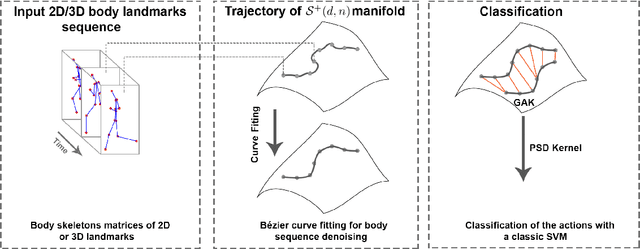

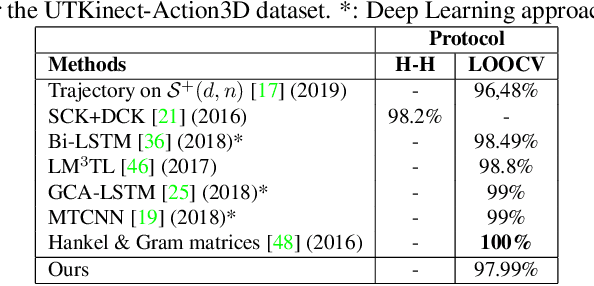

Abstract:In this paper, we tackle the problem of action recognition using body skeletons extracted from video sequences. Our approach lies in the continuity of recent works representing video frames by Gramian matrices that describe a trajectory on the Riemannian manifold of positive-semidefinite matrices of fixed rank. In comparison with previous works, the manifold of fixed-rank positive-semidefinite matrices is here endowed with a different metric, and we resort to different algorithms for the curve fitting and temporal alignment steps. We evaluated our approach on three publicly available datasets (UTKinect-Action3D, KTH-Action and UAV-Gesture). The results of the proposed approach are competitive with respect to state-of-the-art methods, while only involving body skeletons.
 Add to Chrome
Add to Chrome Add to Firefox
Add to Firefox Add to Edge
Add to Edge